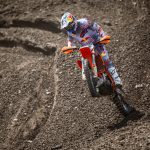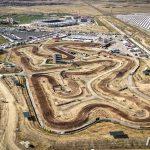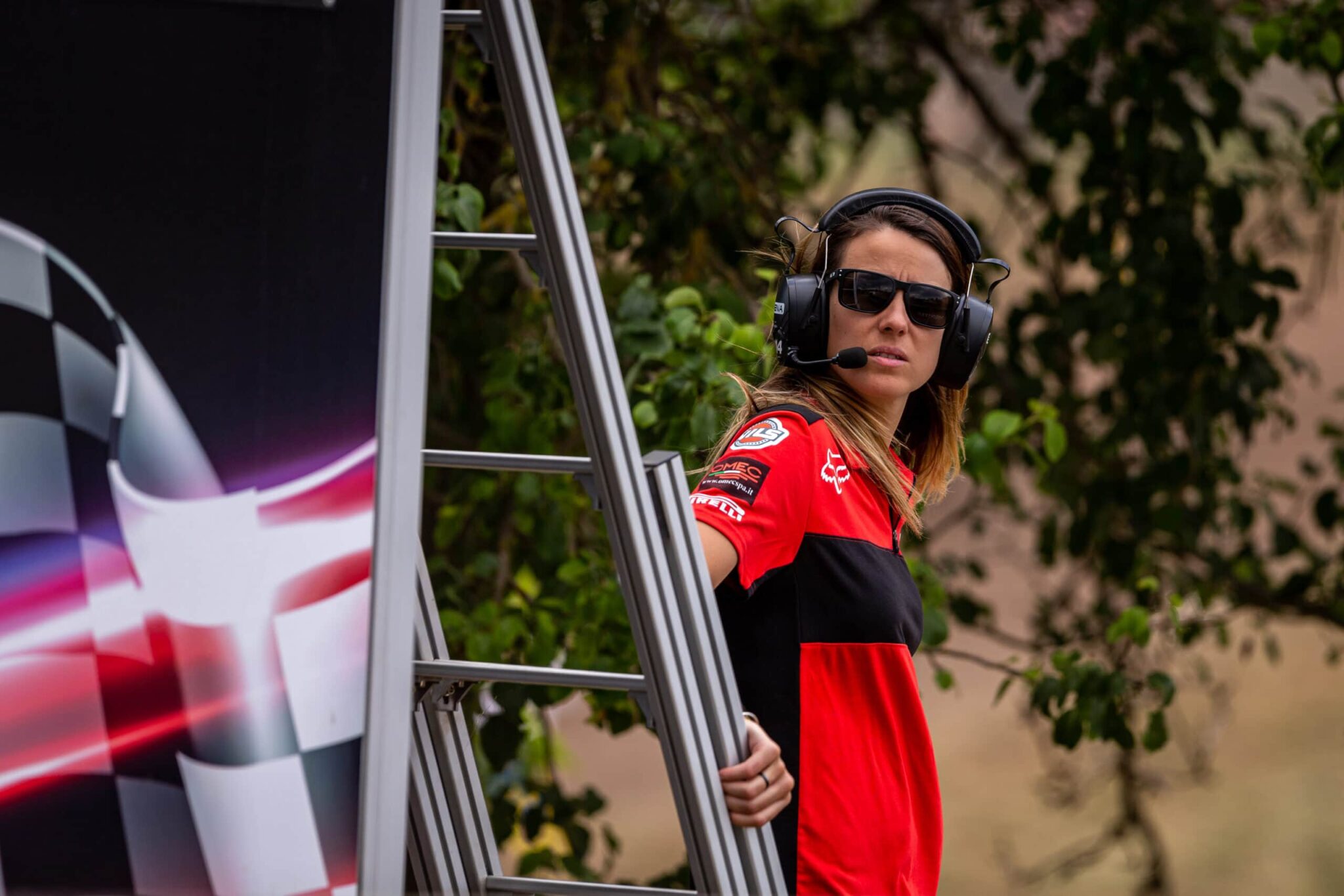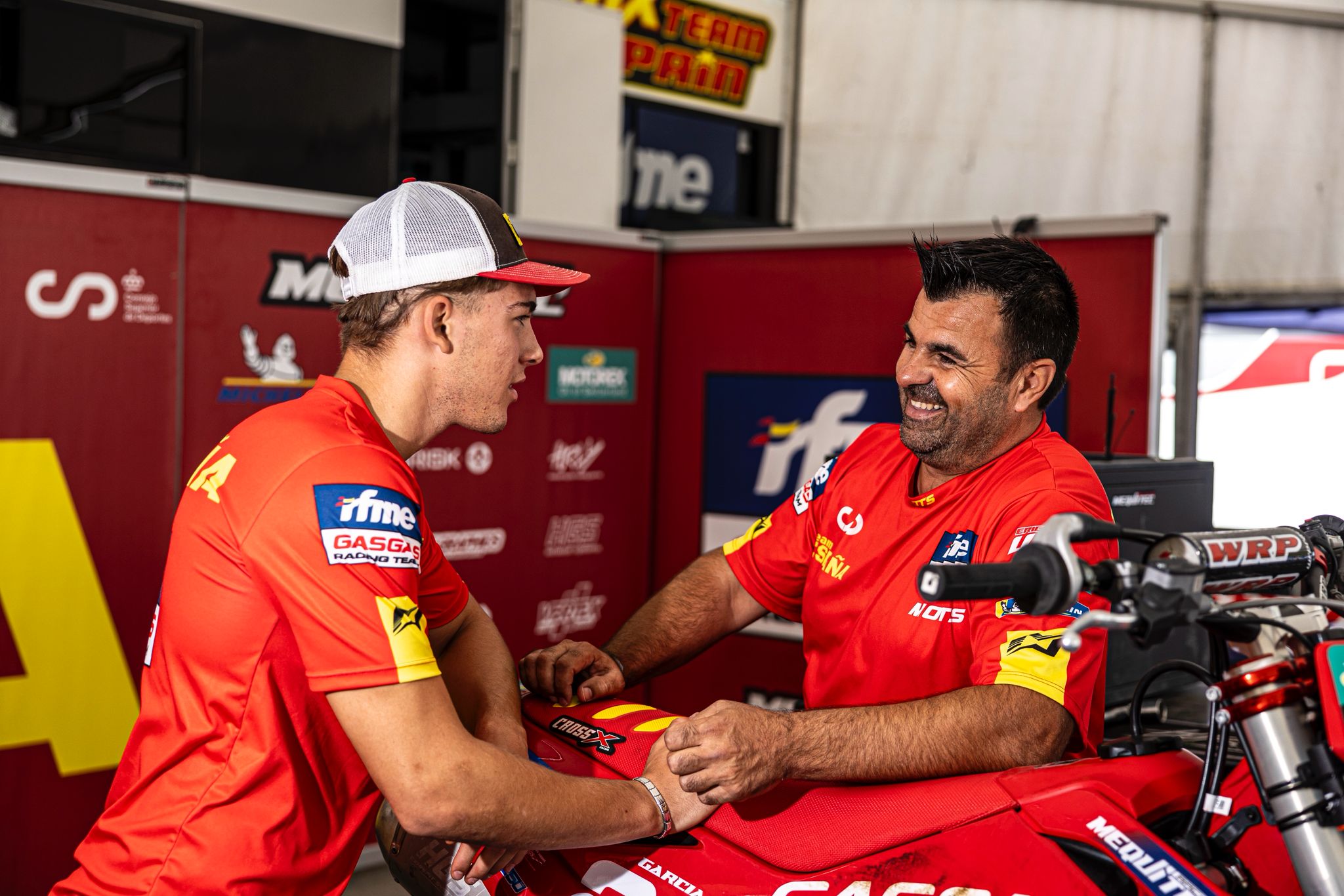Glenn Coldenhoff is one of the most consistent mx riders in the world. Case in point, the double MX of Nations winner has never finished outside of the top-10 in his 9 MXGP seasons. Both his work ethic and attention to detail are legendary. We caught up with Glenn at a critical time in the season. The Fantic factory rider is keen to bounce back, starting this weekend at the German GP in Teutschenthal.
Coldenhoff ended 2023 on a high note, wrapping up his campaign fourth overall. The likable Dutch veteran showed a strong pre-season pace on his Fantic XXF 450, yet struggled to reach his best level during the first batch of world championship rounds.
How do you look back on the first seven GP’s of the season?
Glenn Coldenhoff: “At the moment it’s not going the way I want to. There’s a few things I’m trying to sort out. I planned to turn it around during the last three races because these back-to-back races really can set you up for what’s next. The Spanish GP was quite okay but the Portugal and France were pretty bad. I did finish 4th one moto in Agueda, however you keep a bad aftertaste when the overall result is sub-par. Now we get back to it with another three GP’s one after the other. I’m very motivated to get back up there, we keep on digging and normally hard work is always rewarded!”
Interesting you mention these ‘blocks of three races’. Do they influence each other more mentally because there’s little time in between them to re-adjust?
Coldenhoff: “It’s more a practical issue. With only a few days in between there’s not a whole lot you can do to improve. Part of your time is dedicated to traveling, another is recovery. That leaves one and just exceptionally two bike trainings. This is why the time we had after France was so important to make the best use of it. But I’m optimistic for the next GPs.”
Early on Roan van de Moosdijk, a rookie in MXGP this season, was replaced with Brian Bogers. Did that affect the dynamics of the team for you? To have someone more experienced next to you as a team mate, does it make a difference?
Coldenhoff: “Not really, it’s not necessarily a better situation for me. I had a good relationship with Roan and the bike setup that he had and what Brian has now is very similar. If you have a team mate you can share information regardless of who that is. But off the bike I get along well with Brian too. We’ve known each other for a long time. He’s a good dude, nice to be around. So yeah I’m happy to have him on the team.”
Until last year Kevin Strijbos was in Romain Febvre’s corner as a coach. You started working with him since this year. How’s that going?
Coldenhoff: “It’s very positive. I’m stoked about my collaboration with Kevin. He’s helping me out with about everything in terms of preparation. We share the same vision about how to get fit as a motocross athlete. Kevin has so much experience so that’s of course nice to make use of. Outside of that he’s very knowledgeable about bike setup and so on. I ask him all questions that I’m trying to figure out. Kevin has had such a long career as a rider at a high level which makes him a very valuable resource so to speak.”

From John Van Den Berk over Harry Everts to Joël Smets, Ryan Hughes, Kenny Vandueren, Bart Nelissen and a few others. You worked with a lot of interesting coaches and trainers over the years. Has there been an evolution in how you deal with them?
Coldenhoff: “I think that I’ve always been highly motivated and inquisitive. I’m open about finding new ways on how to improve. Of course my frame of reference has evolved. After all these years in MXGP I know what works for me and what doesn’t. That’s what I’m talking about most of the time with Kevin. The little things to adapt in my program: What track should we go to for practice? Do we need to shift work in the gym from power to speed? What about my cycling sessions, do we make them longer or do we add more interval? One thing that stands out is the need for simplicity. You shouldn’t overcomplicate things in your training program. Execute sensible stuff well and hard work will pay off. That’s the essence really.”
Since last year qualifying races carry more weight with world championship points to be earned for the first ten riders. What’s been the impact of this change on racing in MXGP?
Coldenhoff: “Even before the introduction of the points scoring system for qualifying MXGP has already become more explosive. In my first seasons in the class it was all about pacing yourself. Get a good start, find your rhythm and perhaps if your fitness was still good make a push towards the end. Now everybody is super fit and immediately -from the opening lap- the pace is relentless. Right until the flag drops. There’s no space for a breather. Every race, every moto whether it’s on Saturday or Sunday is at high intensity. That’s a big difference compared to 3, 4 years ago.”

This season a lot of fans have the impression that racing is tighter and more competitive in MX2. They probably feel that the MXGP riders are less on the limit because of the more powerful machinery, higher risks involved and the added experience of the riders. Do you agree?
Coldenhoff: “I don’t see it that way. All riders at the front in MXGP are pushing, taking risks comes with the territory. Most of the times the differences are small. You have about 4 frontrunners with Gajser, Prado, Febvre and Herlings, next there’s a little group where I normally fit in. And you can’t deny that rider mistakes come with a higher penalty on a 450 bike. Jorge (Prado) told me last week that he consciously avoided the jump in Saint-Jean d’Angély where Thibault Bénistant crashed. You just have to hit the deck once to get injured and lose your chance at a world title. That’s a reality. So from that side MXGP riders are probably more calculated. On a 450 you can go to the limit and get away with one or two warnings but if you keep on pushing you know you’ll pay the price the third time! And with every crash you hope that it’s not too bad.”
You didn’t come into the World Championship as a child prodigy, or someone who won a bag of youth world and European titles. Year after year you kept on grinding to establish yourself. What are you most proud of?
Coldenhoff: “To have made it this far I think. As a kid there was never any overbearing feeling that I would become a factory rider and win GP’s. Okay, I’d like to have had more podiums and more GP victories but we keep on going. I’m still enjoying it and having fun with the hard work but I have to admit that a huge part of the enjoyment comes from the results. (grinning) If you’re not getting the results -as I’ve done lately- the process is slightly less fun! But that makes the challenging to get back to where I belong more interesting also. You have to keep believing and put in the effort.”
You did BMX before switching to motocross, following in the footsteps of your older brother Kay. Some kids in your street rode motocross (ed. Joey, Stuwey and Mitch Reijnders) and so did your uncle. Still you’re not a second generation MX rider like the majority of elite riders today. Was that a disadvantage coming through the ranks?
Coldenhoff: “I never considered it to be an obstacle. However, times have changed a lot. Before I started in the European 85cc championship I’d never been to a hard pack track! That’s when we went outside of the country to practice on hard pack for the first time. Talented, young riders are all over the place now to train on all types of terrain. I’m from a very normal family, we were not super wealthy so we had to takes things slowly. It’s been a long journey for sure. Still none of this would have happened without outside sponsors. Some of them, like Van de Wetering, have been with me from day one. I’m super grateful for that kind of loyal support.”
You’re pretty good on a BMX bike and the Netherlands have a great tradition in BMX racing with riders like Niek Kimmann, the Smulders sisters, Jelle van Gorkom and many others. You could have gone to the Olympics?
Coldenhoff: “I’m not sure about that! I did BMX competition for two years. It’s a cool sport but I didn’t like that you had to wait so long until the next one lap race. So in between the races me and my buddies were digging jumps. That’s what I’ve been doing all the time when I was young. When I was racing BMX competitively, my parents came one day with me and the other day we would go MX racing with my brother. (laughs) I’d figured I would make things a little easier by doing motocross as well! With all those people around me doing MX the lure was evident. And it worked out quite nicely. I would get my brother’s old bike and we could train together.”
What’s left on your motocross bucket list after 15 years of GP racing?
Coldenhoff: “I’d love to win my home GP in the Netherlands in Arnhem. I made the MXGP podium in Assen twice. To stand on the top step of the podium, see the fans and hear the national anthem is a big thrill. I experienced what it means to share such a big win with MX of Nations in Assen in 2019. And it’s obviously special to win in Lommel too. It’s the most demanding race of the season and has a huge history so that speaks for itself. I’ve been close on a few occasions in Lommel but I never took the overall.”

Every top rider receives so much more attention, demands on their time when they’re racing their home GP. That’s without talking about the added pressure to perform. It’s a unique set of circumstances by any means.
Coldenhoff: “Sure. You still want it a little bit more when you’re racing for your home fans. You’re more hungry because there are more people coming just for you. I’m also riding for a Dutch team… All of that makes it an even bigger opportunity to shine! Just ask Romain (Febvre) or Jorge (Prado). They won a world title and have many GP wins under their belt but to be on the top step in your home GP gives great satisfaction.”
Who are the riders that you looked up to when you were younger?
Coldenhoff: “At the start of my career James Stewart was sort of a superhero. His results, his style or the famous helicopter video shoot at his compound… That’s the stuff of dreams as a kid! James did things differently and he was an innovator. Just think about the Bubba scrub for example. All of that makes him one of the all-time greats in motocross. Of course there are riders who won more, like Ricky Carmichael, Ryan Villopoto, Stefan Everts or Jeremy McGrath but Stewart did stuff no one else was doing. He pulled it off with a certain flair and an easy-going way. Okay, he had some low points but the hype surrounding him was absolutely justified.”
Stewart quit racing at 30. How long do you want to keep competing at the highest level?
Coldenhoff: “I always maintained that I want to continue as long as I can be in the mix, I’m competitive and can win races. Of course also while enjoying it. Obviously I’m 33 now so I’m closer to the exit of the stage than I’m to the entrance! If a serious injury would happen -which I don’t hope- the decision to quit can be made for you. Anyway I have two-year deal with Fantic so I think the decision to continue will be made on a year-by-year basis. Maybe I wil ride two more seasons, maybe three or perhaps 2025 will be my last.”
What type of riding do you enjoy the most?
Coldenhoff: “I like it when it’s technical. I prefer the more old-school tracks mixed with lots of jumps. That’s when I have the most fun. When tracks are too straight forward, just full throttle, I like it a bit less. And of course I still get a kick of racing in the sand. Don’t ask me why, but I think it’s cool!”
Talking about sand, we’re heading to Kegums (Latvia) soon. That’s been a special place in your career, right?
Coldenhoff: “Definitely! I won there in my rookie MXGP season and in 2020, so it’s been a while. It’s time to make it happen again I would say.”
Some MXGP tracks have changed quite a lot over the years. That’s a huge difference with MotoGP where year- on-year changes are minimal. Outsiders don’t realize how much some of these places have evolved over time.
Coldenhoff: “True. We’ve seen significant changes to the soil in Lommel for example. They brought in new dirt that hasn’t blended in perfectly so to speak. That’s something you notice more in practice, luckily the track is well prepped before a GP weekend. Another example is Teutschenthal. Over the years other types of dirt have been brought in. For sure these changes keep you on your toes! In Kegums they changed the running direction of the track a while ago. Every time some things are modified to a circuit we just have to wait and see how it turns out.”
Consultation of the riders about MXGP track conditions and safety has been and remains a hot topic. As an experienced guy, someone who’s well respected and articulate in his opinions you could be well placed to act as a rider representative?
Coldenhoff: “I don’t think that it would be a role that’s giving me enough satisfaction. There are always GPs when emotions run high about the subject: yellow flag situations, dangerous points on track… Of course it’s a mighty task to keep track conditions at their best with all the racing that’s going on during a weekend. With 4 or 5 classes racing there’s very little time to do track work. That’s a challenge for everyone, for the FIM, for Infront, for the riders. Look at the mud we had in Portugal and France. What’s even possible to mend certain situations in between races? Not a lot, especially if the track is so destroyed.”
You have an incredible tally at the Monster Energy Motocross of Nations. Is your mindset different for a weekend with the Dutch team rather than an MXGP weekend?
Coldenhoff: “I like how it’s so different from what we normally do. You’re really representing your country, you’re riding as a member of a team and performing as a team. I’m a proud Dutchman so it gives me additional motivation to take part in this one race where fans travel to support their country rather than an individual rider. Everyone comes together, which creates a lot of energy and our goal is clear: we want to hear the Dutch anthem come Sunday! The last editions of the MXON have been more complicated for us and I hope we can go for the title again. However things are getting increasingly complicated with new talent coming up. Australia is strong now with Jett and Hunter Lawrence. France and the US are always important. But the Nations is a one of a kind race where twists and turns are more the rule than the exception!”
Thank you for your time and best of luck for Teutschenthal.
Coldenhoff: “Thanks I’m looking forward to it, you’re welcome!”

















